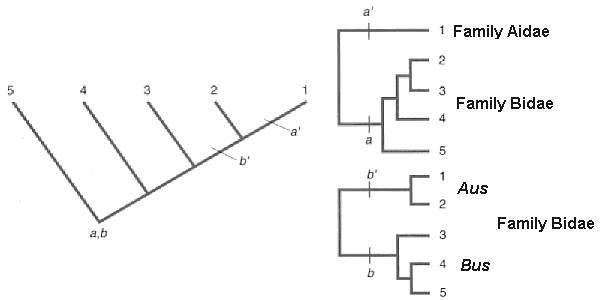
Alternative Paraphyletic classifications

Alternative Paraphyletic classifications
Use of classifications that include paraphyletic groups requires arbitrary decisions about which taxa to include in what groups, based on qualitative assessments of the importance of different characters. Consider the phylogeny of five species shown at left, with the indicated character state changes for two characters a & b.
One systematist [classification shown top right] might consider that character state a' in Taxon 1 makes this a morphologically distinct group, which should therefore be ranked at the same category level (say, the family Aidae) as a taxon that includes Taxa 2,3,4,& 5 (the Bidae). Alternatively, another systematist [classification shown bottom right] might consider that Taxa 1 & 2 are rather similar in respect of character state b', and that they should therefore be included in the same taxon apart from the remaining three taxa, and that the two groups thus distinguished should only be recognized as distinct genera (Aus and Bus) within a single Family. Both arrangements obscure the recent common ancestry of Taxon 3 with Taxa 1 & 2.